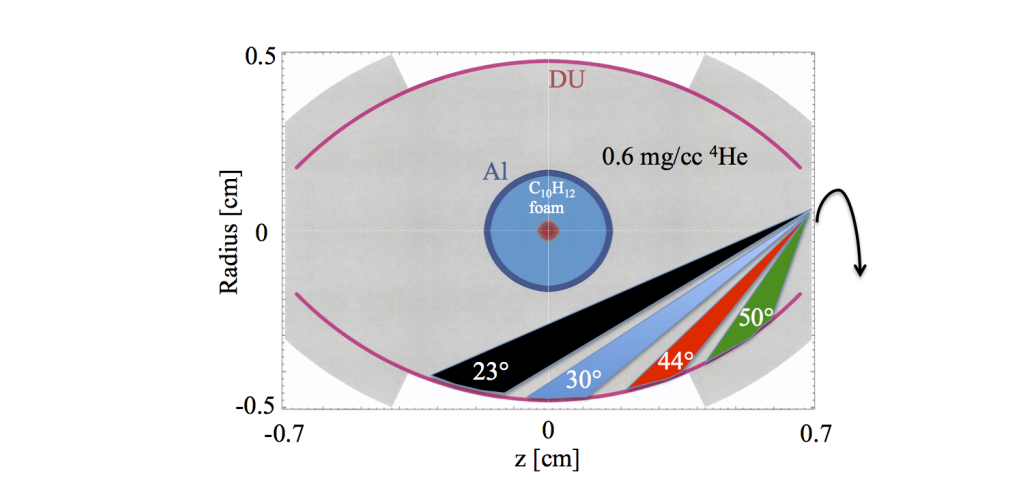Peter Amendt (14-ERD-031)
Abstract
We propose to develop innovative approaches to achieving double-shell ignition for targets for advanced laser systems, providing both a platform for studying high-atomic number and fuel mix and a starting point for developing high-gain designs for potential inertial fusion energy applications. The motivation for this project is to identify and further develop a complementary alternative to central-hot-spot ignition. Our plan is to modernize and adapt a former design—cognizant of advances since then in materials science, simulations, and target material and laser constraints—and implement innovative approaches to potentially simplify target fabrication while maximizing performance margin. The techniques to be applied will consist of analysis and one- and two-dimensional radiation-hydrodynamic simulations.
If successful, we expect an effort by Lawrence Livermore towards pursuing a double-shell approach to demonstrate fusion ignition. Such an effort would provide a complementary approach to realizing the challenge of laboratory-scale ignition. A successful demonstration of double-shell ignition would inspire interest in developing high-gain versions of the target for potential inertial fusion energy applications. Our specific goals are to (1) modernize the original target design to accommodate the latest design techniques and available materials; (2) explore innovative designs for testing that could facilitate and simplify the target fabrication process, improve performance margins, and lessen exposure to debilitating mix; (3) propose opportunity shots at the National Ignition Facility that could test key performance aspects of the revised and improved designs; and (4) propose and develop advanced designs that can accommodate higher gains for providing a potential path to inertial fusion energy.
Mission Relevance
The proposed research sustains the Laboratory's core competency of nuclear, chemical, and isotopic science and technology through development of a high-atomic-number target ignition platform, and meets the imperative of long-range, mission-directed research in the areas of Inertial Confinement Fusion energy and stockpile stewardship. This project will also be effective for training early- and mid-career scientists in the methods of double-shell target design and stockpile stewardship science applications.
FY15 Accomplishments and Results
In FY15 we (1) developed a suite of ignition double-shell designs that could be fielded at the National Ignition Facility over the near term, rather than the advanced designs developed in FY14 that require additive manufacturing techniques not available for at least the next five years; (2) developed simpler lead-doped carbon–hydrogen and silicon dioxide inner-shell designs with all-aluminum outer shells; (3) performed multimode simulations to assess the effects of porosity of inter-shell foams; and (4) computationally assessed current additive manufacturing techniques that are inherently nonspherical and introduce additional seeds for hydrodynamic instability growth.
Publications and Presentations
- Amendt, P., et al., "A testable ignition path on the National Ignition Facility using double-shell targets." Stockpile Stewardship Q. 5(3), 2 (2015). LLNL-PRES-673496.






